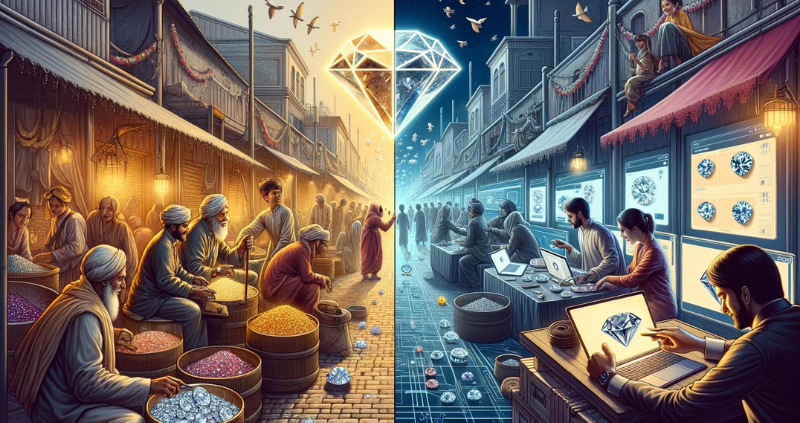Diamonds Redefined: Modern Trends Transforming an Ancient Market
For centuries, diamonds have captivated humanity with their unparalleled sparkle and hardness. These gems have not only adorned crowns and jewellery but have also symbolized wealth, power, and eternal love.

For centuries, diamonds have captivated humanity with their unparalleled sparkle and hardness. These gems have not only adorned crowns and jewellery but have also symbolized wealth, power, and eternal love. Today, the diamond industry stands at a crossroads, with modern trends reshaping an ancient market that dates back thousands of years. This article delves into the current trends in the diamond industry, explores the historical value of diamonds in ancient India, examines whether diamonds are an ancient discovery, and analyzes the market structure of this fascinating industry.
The Current Trend in the Diamond Industry
The diamond industry today is witnessing a transformation in consumer preferences and technological advancements. Lab-grown diamonds are gaining popularity, offering a more affordable and environmentally friendly alternative to natural stones. Ethical sourcing has become a paramount concern among consumers, who are increasingly aware of the social and environmental impact of diamond mining. Furthermore, advancements in cutting and authentication technology are enhancing the quality and traceability of diamonds, ensuring consumers can invest with confidence.
The Value of Diamonds in Ancient India
In ancient India, diamonds were more than just precious stones; they were symbols of power and divine strength. Historically, India was the world's first and, for a long time, the only source of diamonds, making these gems highly valued for their rarity and beauty. Diamonds were believed to protect their wearers from evil, a testament to their spiritual significance. Their indestructibility and brilliance made them coveted items among royalty and the wealthy, signifying not just material wealth but also spiritual and moral superiority.
Diamonds: An Ancient Discovery
Diamonds were found over 2,500 years ago, first in India. They were important in religious events and were portrayed as powerful symbols. Ancient Romans and Greeks liked diamonds for their strength, not really for wearing them.
The Diamond Market: An Overview
The diamond market is complex and multifaceted, characterized by its oligopolistic nature. A few key players dominate the industry, controlling the supply chain from mining to retail. This market structure has historically led to high prices and a lack of transparency. However, the rise of online sales and the demand for traceability and ethical sourcing are challenging this status quo. The diamond market is also unique in its blend of luxury and investment, with diamonds serving as both personal adornments and stores of value.
Modern Trends Transforming the Diamond Market
Sustainability concerns and ethical considerations are at the forefront of the modern diamond market. Consumers now demand transparency regarding where and how diamonds are mined, leading to increased adoption of blockchain technology for traceability.
Lab-grown diamonds are addressing concerns over environmental degradation and unethical labour practices associated with traditional mining. Furthermore, the digital revolution has changed the way diamonds are purchased and sold.
Online platforms and apps, like the GA Demand app, provide a space where buyers and sellers can meet to trade. These platforms offer a wider selection and competitive prices, making it easier for people to buy and sell diamonds from anywhere in india.
The diamond industry is undergoing a profound transformation, driven by technological advancements, changing consumer attitudes, and a growing emphasis on sustainability and ethics. While diamonds have been treasured for their beauty and rarity since ancient times, modern trends are redefining what these gems represent. As the market continues to evolve, the future of diamonds looks bright, with a focus on innovation, transparency, and ethical responsibility.
As we witness the transformation of the diamond market, it's crucial for consumers to stay informed about the origins and impacts of their purchases. We encourage readers to explore sustainable and ethical diamond options, contributing to a more responsible and transparent industry.

